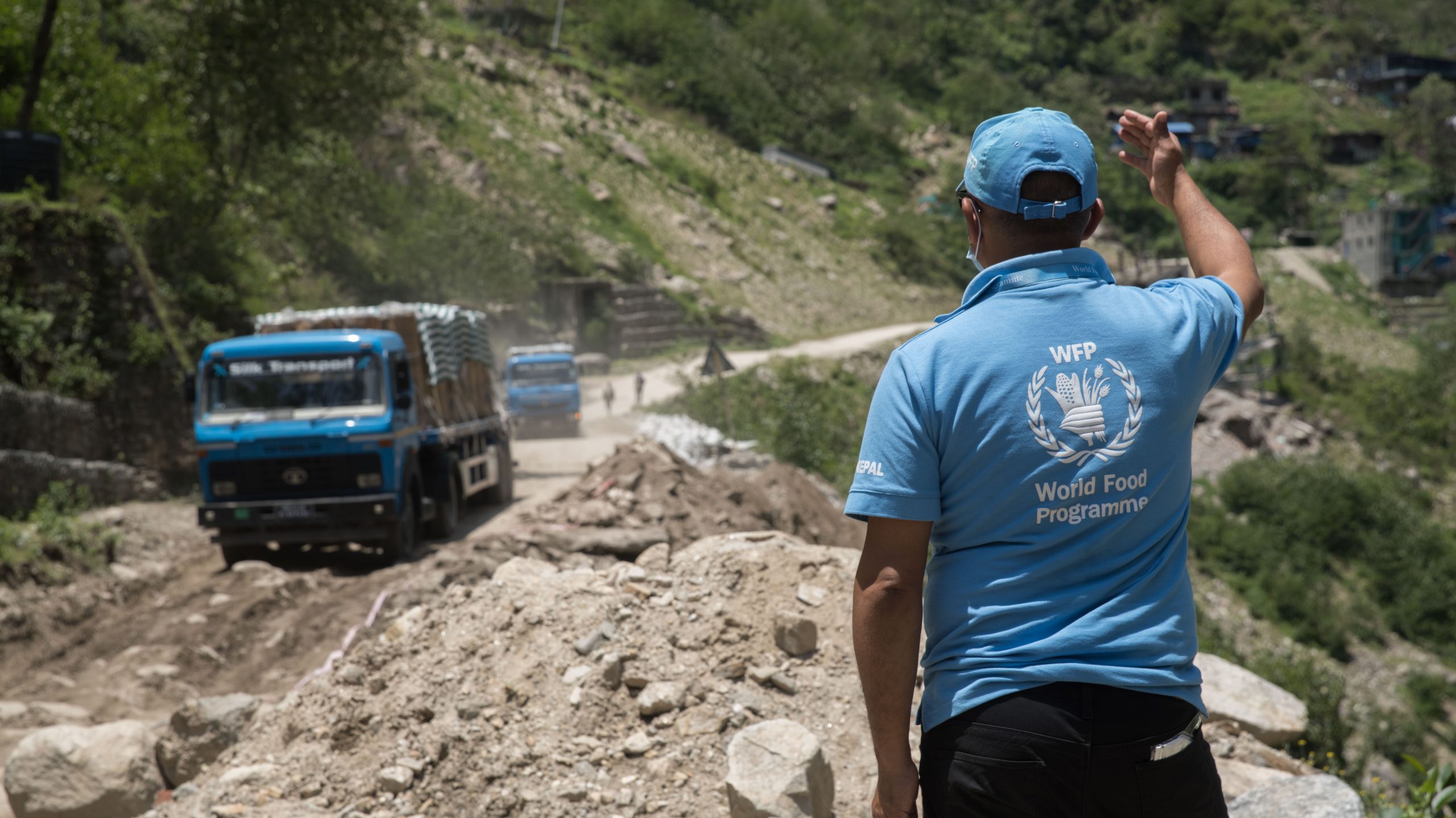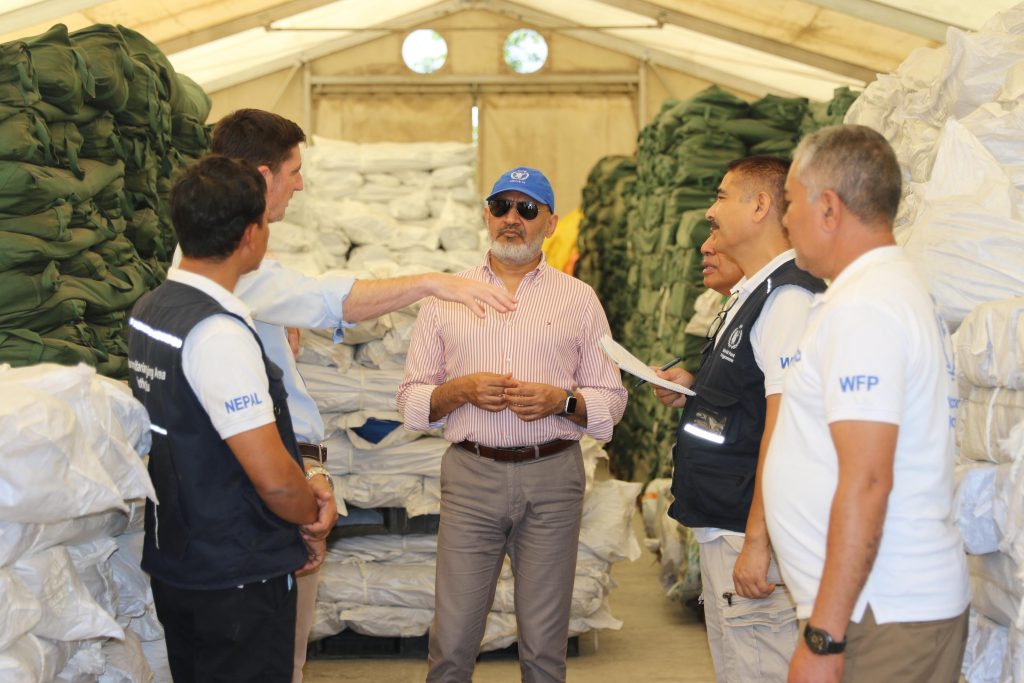
After two months in Nepal, I feel its beauty not just in the warmth of its people and the vibrant culture that fills daily life, but also in the serene landscapes I have visited and the lofty Himalayas, which I have yet to visit. From the bustling streets of Kathmandu to the peaceful villages in the mountains, every corner seems to hold a unique charm. Nepal’s rich traditions and heartfelt hospitality make it a place that feels both breathtaking and deeply welcoming. For me, it is like coming back home!
Nepal has been experiencing monsoon rains. While these rains remain vital for replenishing groundwater and supporting farmers who depend on them for rice cultivation, their unpredictability and intensity highlight the country’s vulnerability to climate variability and the urgent need for stronger disaster preparedness and resilient infrastructure.
WFP’s mission in Nepal is not just about delivering food—it is about empowering Nepalese communities to lead the way in achieving long-term food and nutrition security. Youth make up 40% of Nepal’s population and represent both the country’s greatest human capital and dynamic force for spearheading progress and broad-based economic development. They embody energy, creativity, and resilience, yet they face significant challenges, including limited employment opportunities, outmigration, and social inequalities. Despite these obstacles, young people in Nepal possess the capacity to drive innovation in technology, entrepreneurship, and sustainable development. They can be the architects of a more prosperous, equitable, and resilient future for the nation.
Since my last visit in 2015 to support WFP’s earthquake response programmes, I have seen great progress, and the nation has proven to be a symbol of resilience, community, and shared responsibility. Therefore, for my work during the next few years in Nepal, I have adopted the slogan “Nepal for Nepal”, which captures the spirit of collective action and local leadership and aligns with Nepal’s vision of Prosperous Nepal- Happy Nepali and WFP’s newly adopted Localization Policy (2025) that puts local and national actors in the lead. Here are a few reasons why I believe this approach can play a vital role in addressing Nepal’s food and nutrition security challenges and fostering sustainable economic development, as the country aspires to achieve lower middle-income status by the end of 2026.
Building Resilience and Strengthening Emergency Preparedness – Simple Local Solutions to Complex Global Challenges
Nepal is a country prone to earthquakes and is on the frontline of environmental variability, facing erratic rainfall, floods, landslides, and droughts; hence, preparedness can mean the difference between life and loss.
WFP supports climate-smart agriculture, community-based adaptation, and early warning systems that put tools directly into the hands of local institutions and people. By fostering knowledge and resilience at the grassroots level, WFP helps ensure that Nepalese communities can withstand and recover from climate shocks. Recently, WFP, in collaboration with the Ministry of Forests and Environment, launched an Innovation challenge through the Adaptation Fund Climate Innovation Accelerator (AFCIA) to collect local ideas that would achieve climate resilience built upon local knowledge and practices.
WFP collaborates with the Government of Nepal to strengthen emergency preparedness and response capacity, including emergency logistics information management systems and train local responders. The goal is clear: when a disaster strikes, Nepalese communities and institutions are equipped to lead the response by adopting strategies such as multi-hazard Early Warning systems, Anticipatory Action, and other modern technological solutions to strengthen local indigenous knowledge and traditional practices. This approach reflects the essence of “Nepal for Nepal”.

Improving Food and Nutrition Security by Strengthening Food Systems – From Assistance to Self-Reliance
Food security and adequate nutrition are a cornerstone of well-being. While WFP has historically provided critical support in times of crisis, moving forward, the focus will be on strengthening the capacity of the Nepalese people in shaping their own food security and self-sufficiency. Through its rice fortification programme, home-grown school feeding programme, nutrition support for mothers and children, and targeted assistance to vulnerable communities before, during, and after crises, WFP is ensuring an integrated and holistic solution for food and nutrition security.
Agriculture remains the backbone of Nepal’s economy; however, fragmented markets, inadequate connectivity, inefficient supply chains, and reliance on traditional farming practices continue to limit farmers from realizing their full potential and fuel outmigration. WFP works with smallholder farmers, cooperatives, and local governments to strengthen food value chains—linking producers to markets, promoting fair prices, and reducing post-harvest losses. The vision is clear: a Nepal where food security is achieved by Nepalese efforts, for the benefit of Nepalese families with minimum and targeted external support.
A Shared Vision for Nepal’s Future
“Nepal for Nepal” is more than a slogan—it is a roadmap for sustainable development. WFP’s role is not to replace local action but to reinforce it, ensuring that food systems, resilience, preparedness and response are driven from within the country. This approach reflects trust in Nepal’s contextual knowledge, networks and traditions and supports national leadership in development. WFP’s engagement is closely aligned with the strategic priorities outlined in Nepal’s Foreign Aid Policy 2025 and the 16th Periodic Plan, which emphasize strengthening national capacity for effective and qualitative aid utilization, enhancing Nepal’s leadership in aid coordination and mobilization. WFP will foster partnerships to align foreign assistance, including the support from IFIs and development partners, with national efforts and provide targeted technical assistance to address specific needs and capacity gaps. In doing so, WFP prioritizes the engagement of Nepali citizens and institutions for technology and knowledge transfer. This reinforces national ownership and sustainability, in line with “Nepal for Nepal” approach.
Ultimately, a food-secure and resilient Nepal will be built by Nepalese hands, for the benefit of every Nepalese household. WFP stands alongside Nepal in this journey, but the true architects of change are the people themselves.